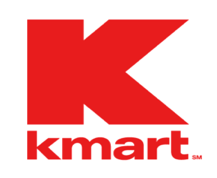Harry Cunningham (1907-1992)

On November 11, 1992, Harry B. Cunningham, Kmart founder and father of the discount store industry, died in his sleep. He was 85. By an odd twist of fate 1992 was the year that the three founders of our nation's most successful discount chains also died. The other two were Target founder John Geisse (in February) and Wal-Mart founder Sam Walton (in April).
In Sam Walton’s biography he states, “Wal-Mart wouldn’t be what it is today without a host of fine competitors, most especially Harry Cunningham of Kmart, who really designed and built the first discount store as we know it today, and who, in my opinion, should be remembered as one of the leading retailers of all time.”
As a young S.S.Kresge store manager, Cunningham exhibited an uncanny interest in listening to what his customers had to say. He asked sales clerks to record all customer requests on little blue cards, which he read daily, and then he ordered merchandise as requested. Within a year, his store sales increased by 100%. At the age of 52 Harry became president of Kresge and noticed that many of the early discounters he visited were poorly managed. He also saw the beauty of the concept and how the professional S.S. Kresge organization could execute it better. He also noted the emergence of a new suburban lifestyle. Young families were furnishing homes and desired high-quality products at low prices. It was March 1961when Cunningham announced to the Board of Directors, "Gentlemen, the discount store is as much a part of Kresge's future as the variety store. And that's where we're going next." Although the Kresge board was skeptical of the discount concept, Cunningham's vision won out and after 63 years the company’s name was changed to Kmart.
By the time the first Kmart store opened in March 1962 in Garden City, Mich., there were 32 more locations ready to open and Cunningham had committed $80 million--an enormous investment then--to the concept. The rest is history. Retail observers forget that Kmart's expansion and growth in the '70s and early '80s is just as impressive as Wal-Mart's relatively recent surge. And Kmart is still widely ingrained on the American psyche. Harry's blue index cards were eventually transformed into the Blue Light Special, which has entered the vernacular and is a registered trademark.
In 1963, Cunningham took the risky step of eliminating stock dividends in order to devote all possible resources to Kmart's expansion. He explained why to shareholders at that year's annual meeting: "Kmart looks so good for the long term that we want to pour in all the locations we can before other retailers see the opportunity." By 1966, Kmart had opened 167 stores and became the nation's largest discounter, a position it held until Wal-Mart overtook it in 1990.
A native of Home Camp, Pa., Cunningham left Miami University, Oxford, Ohio, after his sophomore year to take a newspaper job in Harrisburg, Pa. He joined Kresge in 1928 as a management trainee and in 1940 started his climb to the top when he became a store manager. Although others had pioneered the discount store concept, Cunningham's major contribution to the industry was taking the idea and making it work. He applied the discipline, operating controls, executive talent and deep pockets of S.S. Kresge, and used them to roll out the concept others had pioneered. But where early chains foundered because they were operating by the seat of their pants, Kmart under Cunningham succeeded in developing a national discount store chain.
